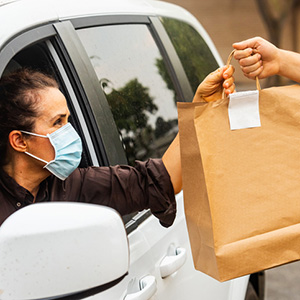
Curbside pickup has become a major means of retailing in the COVID-19 pandemic.
As of June, 77% of millennials were using curbside pickup at least once a week, according to a study released that month, “COVID-19 and the Future of Commerce,” from Medallia Zingle. And it’s likely here to stay, even after we’ve all been vaccinated against the virus. Eighty-seven percent of those polled in the study said they think brands should continue to offer curbside pickup and other options that limit the need for in-person visits in the long term.
That means that retailers will need to fine-tune their curbside services, removing as much headache (or “friction,” in retail parlance) as they can for consumers when finessing operations.
But when it comes to curbside pickup, retailers also need to protect themselves legally.
We asked Andrew Chipman, vice president of underwriting jewelers block and personal jewelry for Berkley Asset Protection, for his recommendations on how to create a curbside pickup service that not only runs beautifully, but also strives to mitigate risk (legal claims, accidents, and more).
Set Up Curbside Service Far From The Road
“This makes sure that employees are kept as safe as possible, in case of any driving accidents.”
Collect Payment Prior to Pickup, and Ask for ID
“Unfortunately, there’s a lot of credit card fraud out there,” says Chipman. “Making sure that you are checking identity [the client’s driver’s license] with the payment will be easier once the consumer is on the premises, as it adds another layer of security and protection for your business.”
Bring Out Only One Order at a Time
“This is the ideal way to handle curbside pickup orders. In the unfortunate event that [theft] happens, the loss is minimized to one item and not several.”
When Available, Have A Security Guard Nearby
“In today’s uncertain times, having a professionally trained guard or law enforcement officer will accomplish two tasks: First, it will give customers a sense of security. And secondly, [that presence] provides a layer of deterrence to would-be criminals.”
Never Leave Any Property Unattended
“While theft is the biggest risk of leaving [products] unattended, other issues such as accidents that cause damage can occur. For example, imagine a table with various jewelry items on it that someone accidentally bumps into. This could cause pieces to fall, resulting in damage.”
Retailers should also always wear—and require their employees to wear—a protective face mask when interacting with clients during curbside service.
(Photo: Getty Images)
Follow me on Instagram: @emilivesilind
Follow JCK on Instagram: @jckmagazineFollow JCK on Twitter: @jckmagazine
Follow JCK on Facebook: @jckmagazine